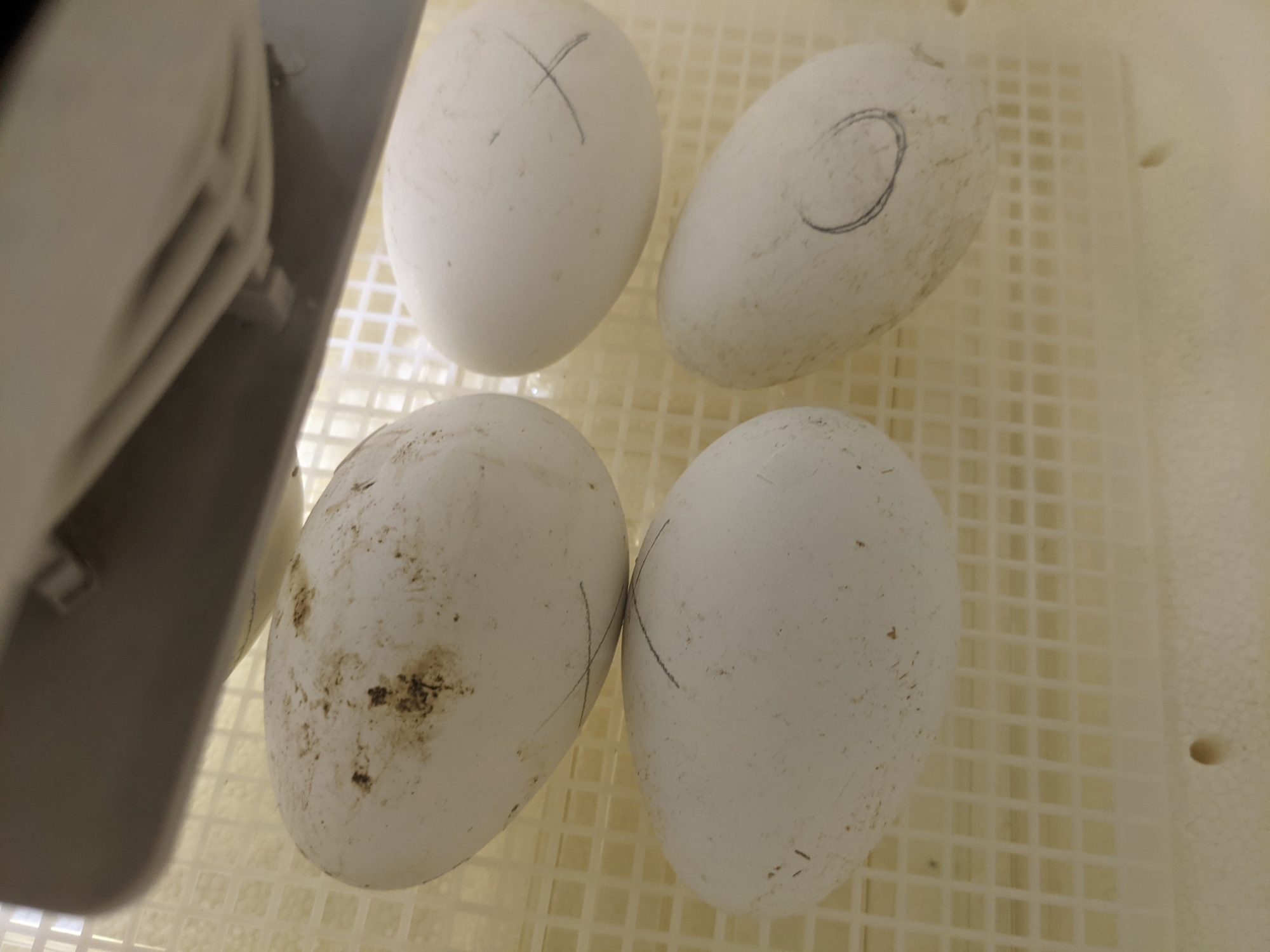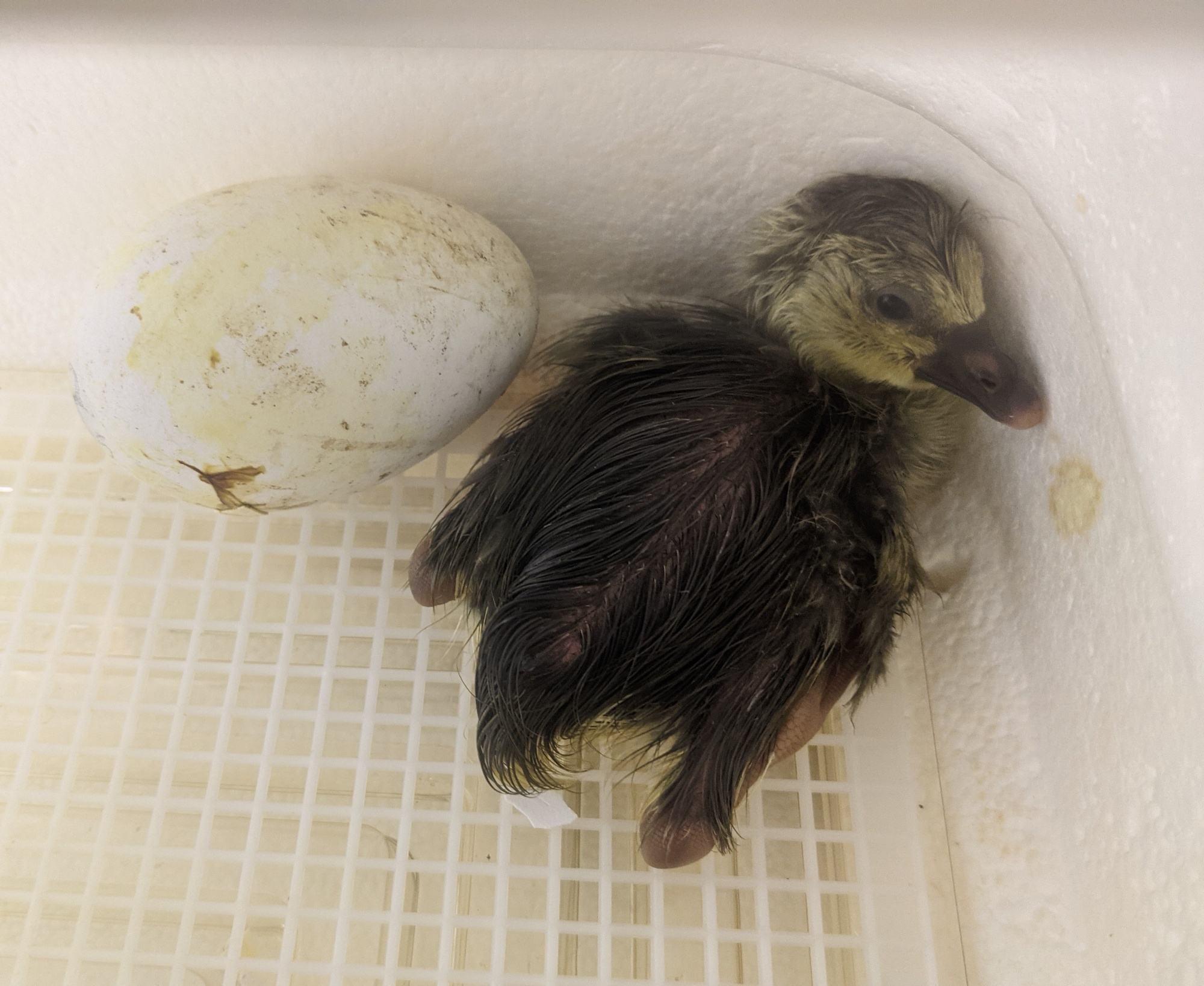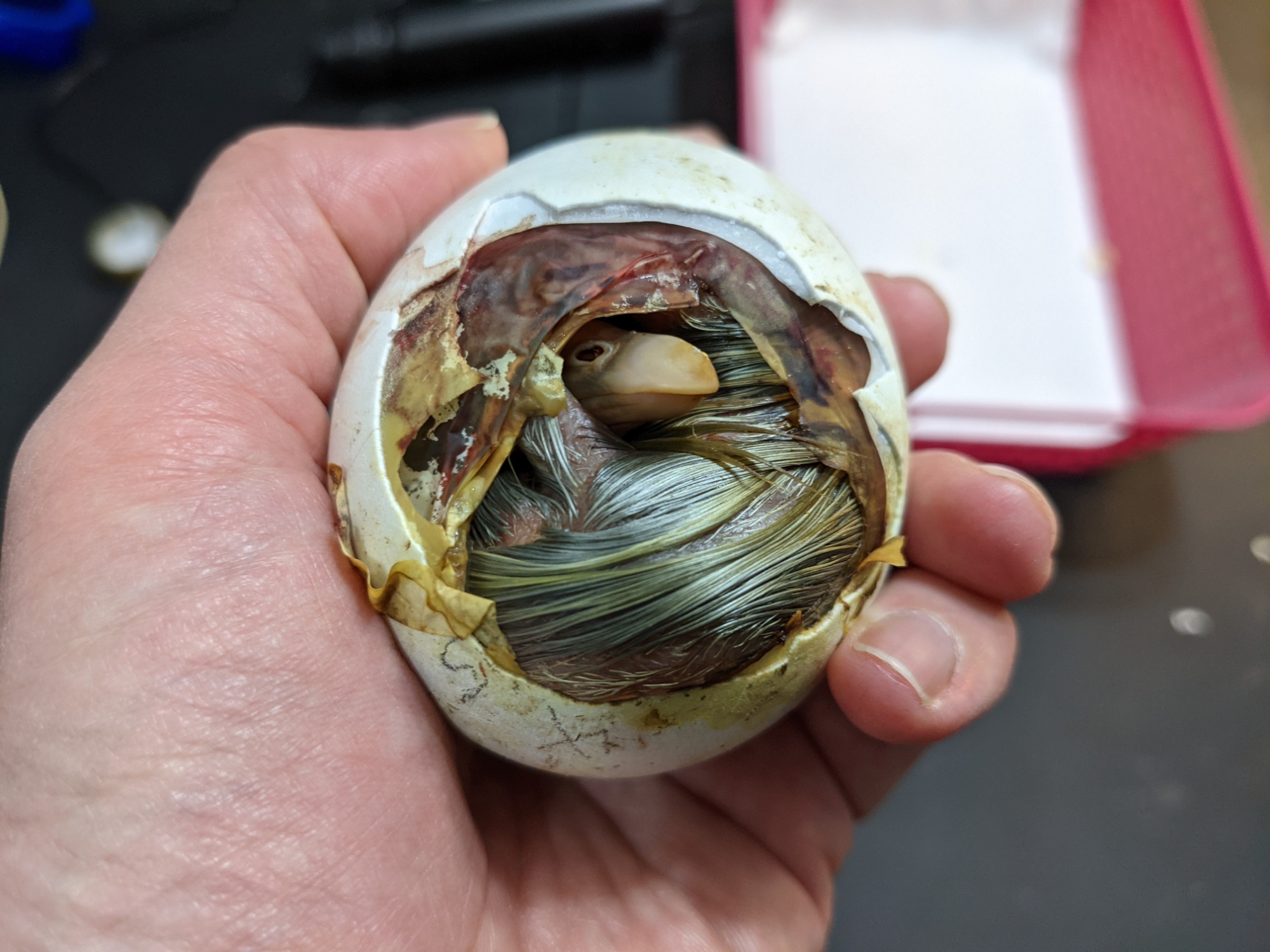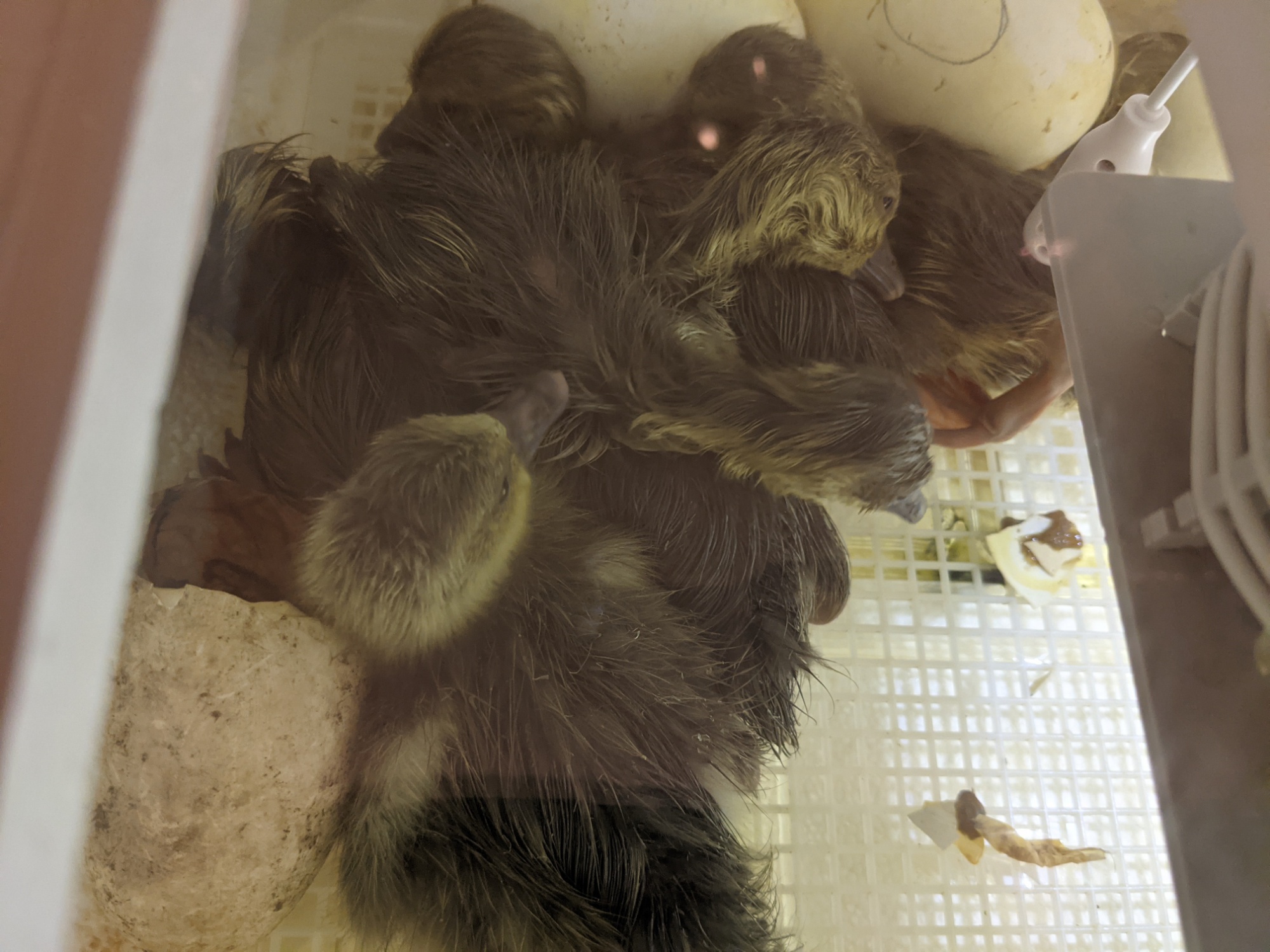
Sometimes, the quiet in an incubator with eggs in lockdown is deafening. What’s going on in there? Are the air cells large enough? Are the goslings still alive?? And then, out of the blue, a pip appears!
As of early morning, one utterly adorable gosling had hatched. It knocked the other eggs around after it hatched, of course, making surveilling the other eggs’ progress more challenging. At bedtime last night, though, I saw that 9 of the 10 eggs had externally pipped. A great sign!

I’ll confess that when I spontaneously awoke at 02:30 this morning, I checked on the hatcher to make sure the humidity remained high for hatching. It was fine – the hygrometer was reading 70% – but I added some warm water to ensure that it didn’t run too dry in the period between then and when I would check it again in the (later) morning.
After managing to get back to a fitful sleep for a few hours, I awoke with the goslings on my mind. The one that had been peeping at me through a good-sized hole at 02:30 had hatched. It looked healthy and active, just what I wanted to see. #2 was out!

The other goslings were still working on their zipping, and some of the membranes were looking a bit brown, which can be a sign that they are drying out and potentially trapping the gosling inside. Well, we can’t have trapped goslings when they’ve come this far! I raised the humidity again – closer to 80% – and went out to do the morning chores.
When I returned, three more goslings had hatched! They all looked great, too, just huddling together and drying off. One of the eggs that had pipped yesterday looked like the gosling was facing away from the pip, possibly malpositioned, so I decided to take a look at the six remaining eggs and ensure that they were still working on hatching (one was not externally pipped).

Incubation lore says not to open the incubator during lockdown. Well, if you’re using a still air hatcher, I can see that it might be a problem because those take an inordinately long time to come back up to temperature after they’re opened; a circulated air hatcher, like the one I’m using, regains proper temperature quickly. I also bring a spray bottle with warm water and a medical squeeze bottle (also with warm water) to increase the humidity quickly after opening the hatcher. In this case, the humidity had already climbed to about 85% due to the goslings hatching, so no extra moisture was needed.
Five of the remaining eggs had pipped externally, but two had not gone fully through the outer membrane, so I carefully opened the membrane a bit to see what was going on. One was ready to hatch and popped out pretty quickly once I placed it back in the hatcher. Another seemed to be malpositioned, so I pushed the membrane back from around its head to ensure it had clear access to air (I have seen, after the fact, hatchlings that suffocated from membrane gluing to nares).
A couple of other goslings were doing fine, just working on absorbing their yolks – indicated by the yawning motions they make with their bills. Those needed more time in the hatcher before they would be ready to emerge. I applied coconut oil with a cotton swab to any inner membranes that looked dry and also used the swab to soften membrane that I pushed away from bills.

The last egg was one I was concerned about – it was not externally pipped and quiet as a mouse. I candled to see what going on inside and saw that it was actually internally pipped: the bill was a dark shadow in the large air cell, and moving. Still alive! I chose to make a safety hole, a tiny hole in the top of the air cell, to assure the reach of oxygen to the gosling. This one may just be a little behind the others, so I’ll monitor it periodically to determine if assistance is warranted.
Hatching goslings requires patience, so I’ll leave the unhatched to keep working on it. Intervening too quickly or too aggressively may actually cause the death of a hatchling, so any help must be judicious and incremental – I want the goslings to hatch as naturally as possible, absorbing their critically-important yolk sacs, and strengthening their legs by pushing out of the shells. Failing to do either may also cause disadvantage or even death. I know this from research and experience. I also know that hatchlings sometimes benefit from a little assistance. This is the conundrum that people who choose to incubate face with nearly every hatch, and one that can have grave consequences if a mistake is made. I just try my best not to make mistakes.

I expect that the hatch should be wrapped up in the next day or two – the last egg may take longer. I’d really love to see all 10 goslings out of their shells and talking up a storm, so I’ll be on call to help as needed.
Wondering if you should assist a hatchling? Read this guide first and keep it handy for reference!
